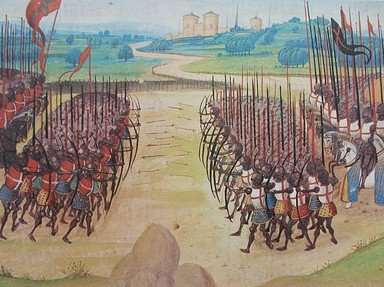
Phases of the Hundred Years War Quiz
There were three main stages of the war which lasted from 1337 until 1453, with periods of peace. They are the Edwardian phase, 1337-1360, the Caroline phase, 1369-1389, and the Lancastrian phase, 1415-1453. Sort the events listed into the correct phase.
This is a renovated/adopted version of an old quiz by author nicklocher
A classification quiz
by rossian.
Estimated time: 3 mins.